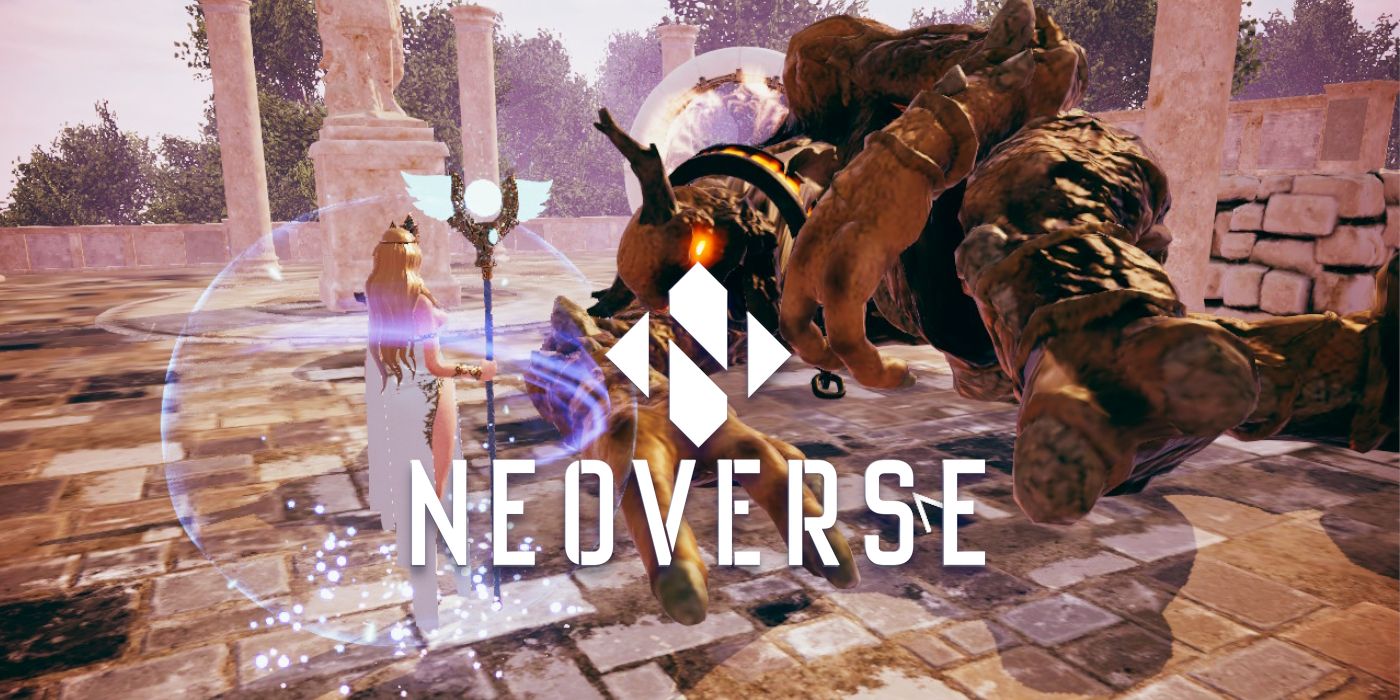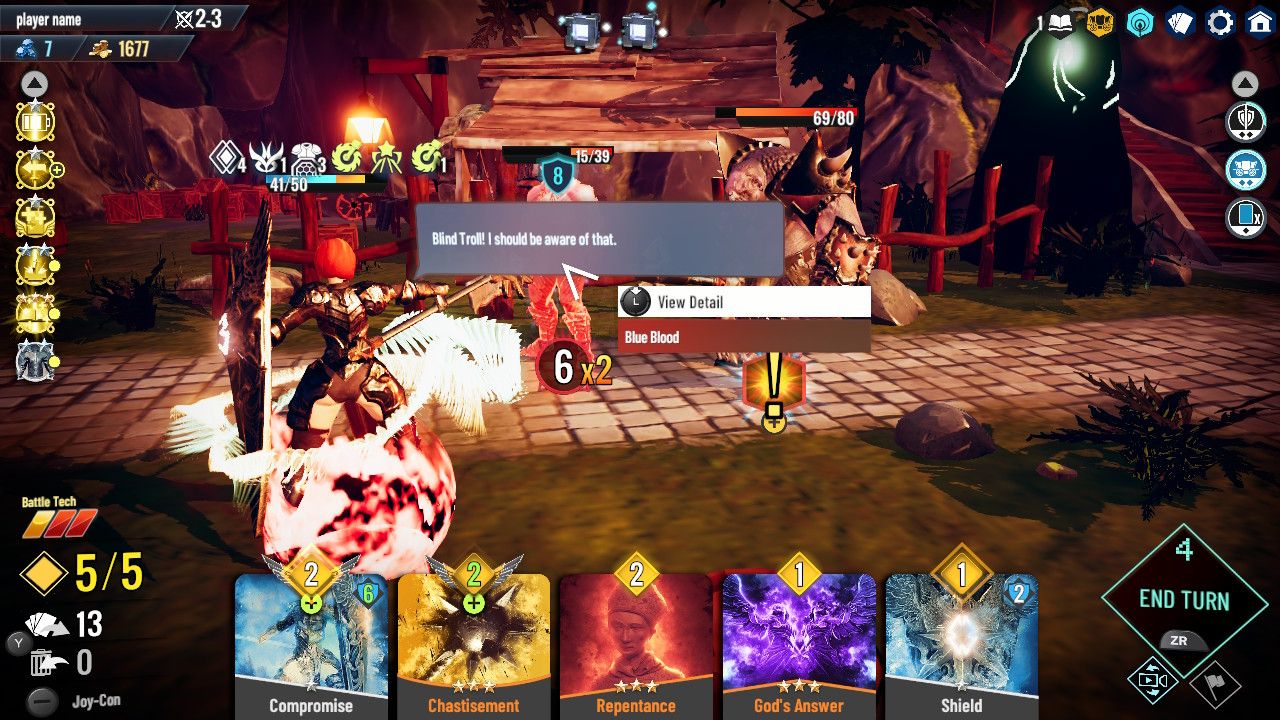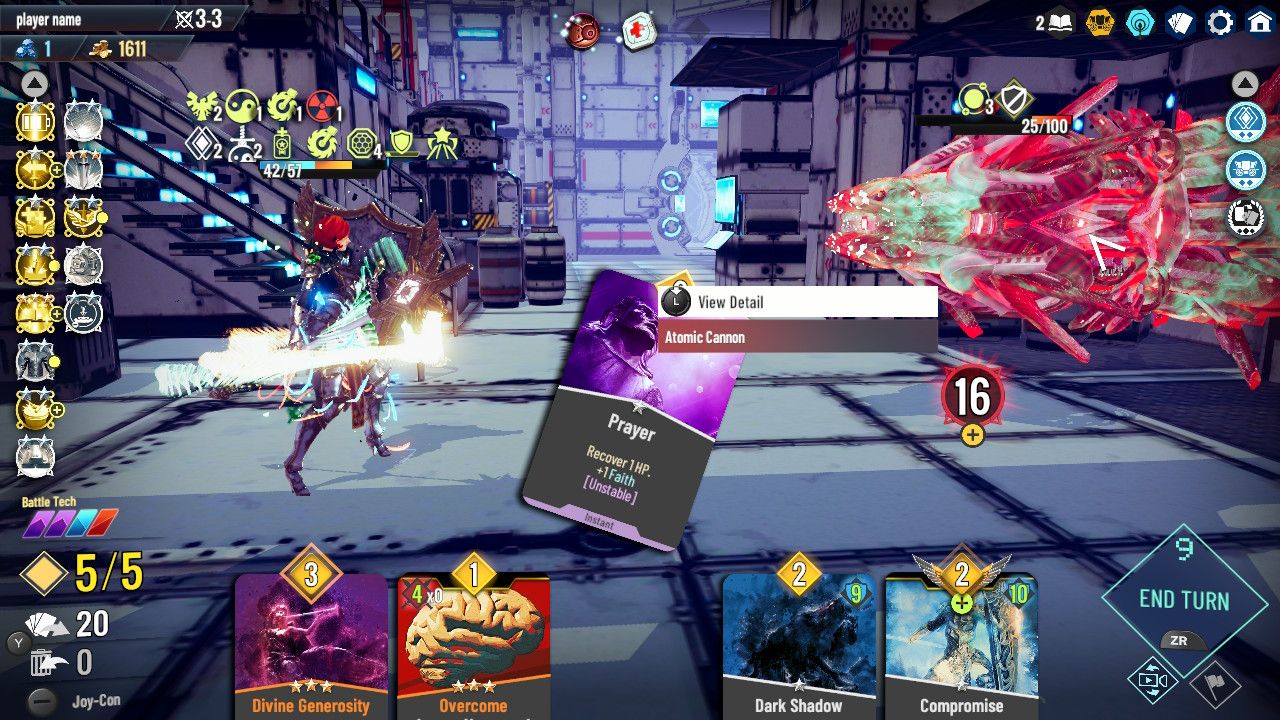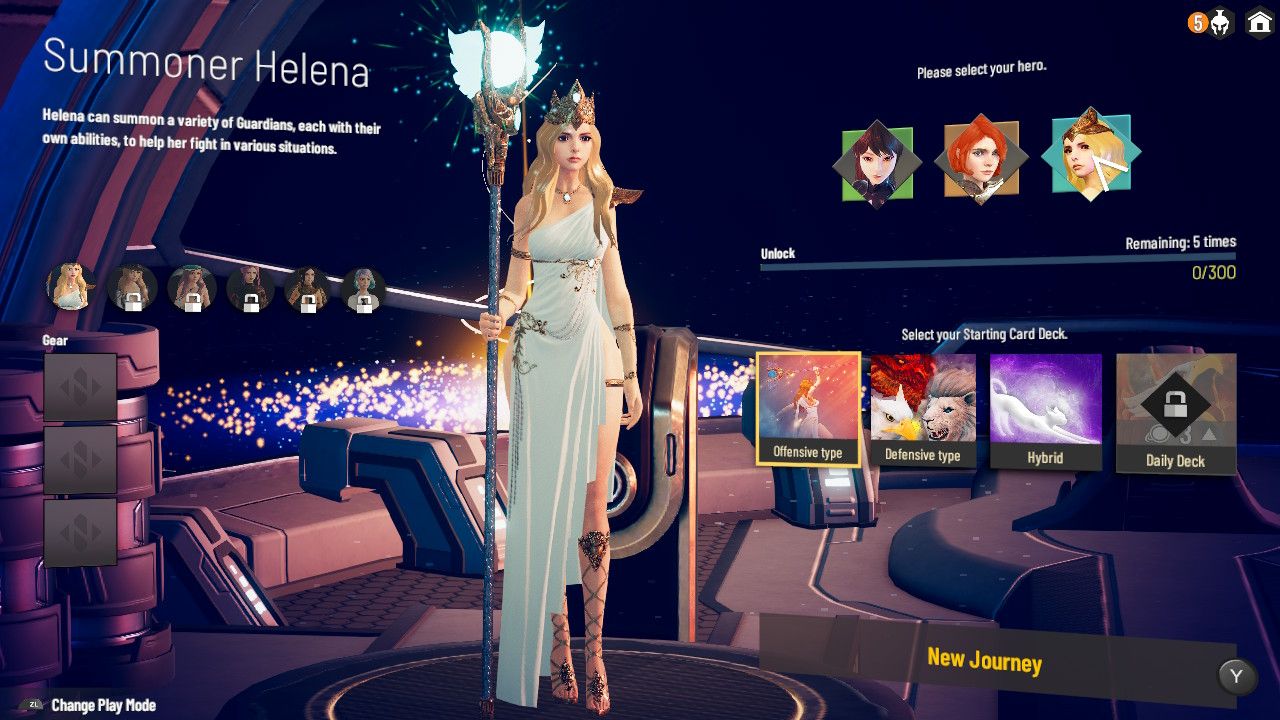Neoverse Trinity Edition, the deck-building roguelike now ported to Nintendo Switch, is beholden to Slay the Spire. That isn’t necessarily a bad thing, as the latter remains the gold standard for the genre, occasionally imitated but rarely bested. What separates Neoverse from true greatness is a general sense of design bloat, a regressive reliance on objectified women characters (with “jiggle physics” absolutely intact), and barely any narrative context to be found. If there is a story present it’s hidden at the edges of the game’s unwieldy, downright hectic UI. In spite of these concerns, Neoverse still manages to leave an impression as a fun and somewhat easy deck-builder.
Booting Neoverse up for the first time treats players to a busy, unintelligible video intro, implying some grander adventurous storyline for the three women at its center. That video is a misdirect, as the game just shoves players directly into enemy encounters with too much frontloaded information. Buffs, debuffs, synergistic possibilities, and even exactly how given cards and abilities work is initially enigmatic. A tutorial-style handholding process interrupts these first fights, but the screen is always packed with so many icons that it all quickly blends together, and the game’s bedrock basics need to be slowly drawn to light.
The foundation is there, though. Neoverse borrows Slay the Spire’s thorough tooltip-filled design wholesale, but it’s much less coherent in a game with squealing anime girls and detailed 3D assets. There’s even 360-degree camera control available for each battle, despite the fact that characters do not move around the environment (there’s a likely reason why camera control is included, and it regards the character models). Early enemies seem akin to something found in a Unity assets store, but deeper into the game there are more interesting baddies to pummel.
Neoverse’s three heroes also slightly echo Slay the Spire’s original trio - the Ironclad-like Naya is the most straightforward fighter-style pick, whereas summoner Helena’s combat style requires a reconsideration of combat basics, akin to the Defect - but they’re all viable picks with disparate strategies, and any can quickly become overpowered. This relates to Neoverse’s relatively gentle difficulty level, doubly so in how its in-game shop can be visited at any time, even during active battles. Each character also has ability trees that can be activated with skill points, purchasable at the shop or awarded by completing specific challenges.
That reward-focused game design goes even further, though: Neoverse’s “Battle Tech” system provides opportunities to stun enemies by precisely matching their attack with armor, and landing a perfect deathblow on enemies rewards the player with a currency boost. Beyond that, card types can be played in specific sequence to match a rotating prompt, which then powers up the following attack card with double damage. This overall supportive basis is Neoverse’s most distinctive gameplay feature, and it works, but it also means that some deck-building veterans may scoff at the game’s relative ease or simply find it boring.
Then again, everyone isn’t looking to white-knuckle it through a brutal roguelike, and Neoverse’s systems and techniques are worth picking through and mastering, especially for the higher unlockable difficulty modes. The game looks sharp and smooth on the Switch, albeit mostly illegible in handheld mode. Here’s a tip: learn the Neoverse basics comfortably with the system docked on a big screen, then play it portably once all its icons and nuances become second nature. Perhaps a future patch will correct this serious flaw, especially considering how nice it feels to tuck into a game like this on the couch or commute.
As it stands, Neoverse won’t convert diehard Slay the Spire fans, but it can effectively woo the ones who are looking to scratch that itch with a new IP. Even with challenge modes, special gear to grind, and multiple bosses, there’s less complexity and potential for wildly different runs, less magical chaos and luck of the draw. The developers have clearly put thought into the battle system, even though they’ve crafted a game that provides more overpowered gameplay loops than its inspiration. Its design is overly flashy - sometimes even gaudy and cringey, especially the additional unlockable “costumes” for the heroes - but Neoverse’s superficial surface isn’t hiding a dearth of substance, with numerous hours of deckbuilding enjoyment to be found.
Neoverse Trinity Edition is out now on Nintendo Switch, as well as PC and iOS through Steam. A digital Nintendo Switch code was provided to Screen Rant for the purpose of this review.




